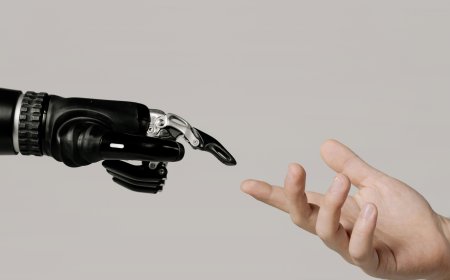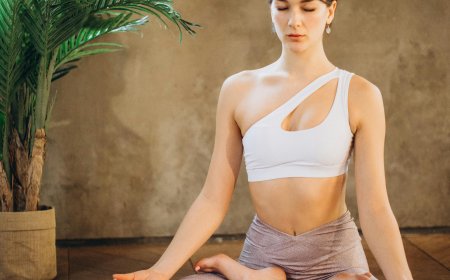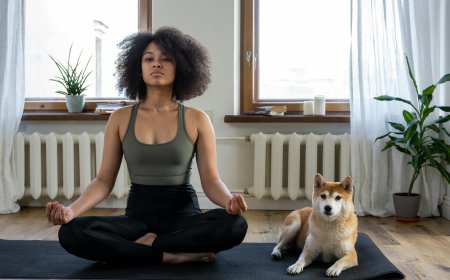9 Hip Pain Treatments for Older Adults You Can Do at Home
Hips play a central role in healthy aging. Our hips enable us to do a wide range of daily activities. Whether standing, walking, or climbing stairs, we need them for just about every physical activity! It’s hardly surprising that weakness and pain can cause serious hip conditions. When the joint we need for everyday movement […]

Hips play a central role in healthy aging. Our hips enable us to do a wide range of daily activities. Whether standing, walking, or climbing stairs, we need them for just about every physical activity! It’s hardly surprising that weakness and pain can cause serious hip conditions.
When the joint we need for everyday movement isn’t at its best, neither are we.
While you should always visit your doctor for chronic or severe pain, there are some hip pain relief treatment options you can try on your own. There are a range of options, from light exercises to homeopathic remedies.
Here, we’ll explore common causes of hip pain, some of the best hip pain treatments you can try at home, and when to contact your doctor.
Common Causes of Hip Pain

Hip pain has many different causes, from simple muscle strains and sprains to chronic conditions requiring medical intervention. Regardless of the underlying cause, remember that the risk for injury and hip joint pain only gets worse with age. Not only is it easier to get injured, but it can be harder to fully recover
Here are some of the most common causes of hip pain:
- Fractures and Falls. If you fracture your hip, you’ll likely experience intense, sudden hip bone pain. These injuries can be serious and lead to other health complications. The risk of hip fracture becomes more common as we age because falls are also more common. This makes it one of the most common hip pain causes.
- Tendinitis. This is caused by inflammation. Tendinitis usually presents as a dull ache or stiffness in the hip. This is the most common cause of chronic hip pain in women. The pain is often felt in the front part of the thigh or groin.
- Psoas Injury. The psoas is a rope-like muscle located deep in the belly, which runs obliquely from the spine to the femur. The psoas is the body’s most powerful hip flexor. When it is tight or injured, it can cause pain and inhibit regular exercise. The psoas contracts every time you lift your knee, so you can imagine it is easily overused, especially if you are a runner.
- Overuse. With age, the cartilage surrounding your hips can wear down or get damaged, or the muscles and tendons in the hip can become sore from overuse. When tightness and overuse occur, tendons that run over bony areas can be painful. Some experience a snapping or rolling sensation over their bone.
- Wear and Tear. Our hip joint goes through regular wear and tear as we age. When this happens, cartilage breaks down, which can lead to pain and inflammation.
- Old Injuries. Hip pain from old injuries is common. Significant injuries like car accidents or sports-related injuries can be hard to fully recover from. This problem tends to escalate if proper physical therapy and exercise don’t stay a priority.
- Lack of Exercise or Bad Exercise. A sedentary lifestyle can cause many health problems, and hip pain is one of them. Lack of mobility can lead to weakness in your hips, making it harder to stick with routine exercise and activity that helps you lead a healthy life. However, doing the wrong exercises can also lead to hip pain. You’ll want to avoid activities with repetitive hip flexion.
- Excess Weight. Extra weight causes two major problems: It increases the joint reaction force, which causes extra pressure and more wear and tear on the joint over time, and it increases inflammatory factors, which can cause joint pain. Studies have shown that even one pound of weight loss can remove six pounds of pressure from the hips.
- Hip Arthritis. This happens when there is a loss of protective cushioning in the joint. Hip pain from this cause is typically felt in the groin area and sometimes in the outer thigh and upper buttock area as well.
- Hip Bursitis. Bursitis is an inflammation of the fluid-filled bursa sac, which is a small, gel-like pillow that sits between your bones and their connective tissues, acting as a sort of shock absorber. Symptoms can include sharp pain followed by aching over time, hip tenderness, pain that gets worse with repetitive activity, leg pain from the hip down the side and back of the leg, and pain or discomfort climbing stairs, running, or cycling.
Important note: if you have warmth and redness in the area along with fever or illness, you could have septic bursitis, which comes from infection. We recommend seeing your healthcare provider for a physical exam.
Hip pain doesn’t have to mean surgery or the end of your mobility. Many types of hip pain can be soothed and improved with non-surgical treatments.
Next, we’ve compiled 9 of our favorite tips for non-surgical hip pain treatment.
1. Start Your Day With Mobility and Stretching

It is fairly common to get tip hip flexor muscles if you spend a lot of time sitting, running, or biking. Moving your joints through a healthy range of motion washes them in fluid, keeps them working smoothly, and can help prevent joint pain.
Because everything in your body is connected, you’ll need to work the hip flexors and the surrounding muscles and joints that support them. For example, when your hips feel tight, it can cause overuse of the spine, resulting in pain in your lower back. Adding hip stretches and mobility exercises will support the muscles and joints in the back and spine.
These are the best mobility exercises to stay active. Plus, you can try these hip-opening stretches and the best yoga poses to relieve tight hips.
2. Find Out If Your Feet Are the Problem

Everything in your body is connected, and hip pain can sometimes signal problems with how you’re walking or the type of shoes you wear.
If you’re a runner, make sure your shoes have adequate cushioning and support. Chiropractors can also help assess your gait—how you naturally walk—and see if you over-or-under-pronate your foot.
Pronation is how your foot rolls inward when you walk and run. Under or overpronation can cause hip issues because your gluteus muscles have to work extra hard to overcompensate.
3. Strengthen Your Thigh Muscles

Your thigh muscles help support your hips more than you may think! If you suffer from arthritis in particular, strengthening those thigh muscles will help support your hips more and hopefully lessen your pain.
Try these exercises that strengthen the thigh muscles or add leg lifts and pilates moves that target the hips and thighs into your exercise routine.
Also, be sure to check out our hip-strengthening exercises for seniors.
4. Incorporate Regular Exercise (But Avoid High-Impact Activities)

Movement, in general, is also a great way to strengthen a weak hip. Try lower-impact options like walking or cycling, and avoid high-impact activities like running and jumping. Low impact doesn’t have to mean ineffective. All of our favorite picks for the best hip exercises for seniors will help strengthen your hips!
If stability is a problem for you, feel free to grab a chair, couch, or even the wall to hold onto while performing these standing exercises. The more you do these hip exercises, the more you will develop stability and balance.
5. Try Water Aerobics

Swimming and water exercises are amazing, low-impact exercises. The body is unweighted in water, making it easier to exercise for longer, with less impact. Plus, resistance in water can be anywhere from 4 to 42 times greater than on land, making a pool or body of water a natural weight-training machine!
These are our favorite pool exercises for seniors, plus a 30-minute pool workout to help you get started. Walking and yoga are other great low-impact exercise options.
6. Know When To Use Hot vs. Cold Therapy

It’s helpful to understand when to use hot vs. cold therapy to treat your hip pain.
Cold Therapy
For new injuries or acute pain, it’s a good idea to use cold therapy, like ice or a cooling gel pack.
- Ice not only numbs the pain but will decrease inflammation and swelling.
- You do not want to use heat to treat acute injuries because it can increase inflammation, delaying your healing.
Heat Therapy
For chronic injuries or arthritis pain, you’ll want to use heat therapy like soaking in a warm tub, or applying a hot compress or heating pad.
- Heat works best for chronic pain because it increases blood flow and helps relax and soothe those tight or painful joints.
- It’s best to apply heat before a workout if you have chronic pain, not after, as that can aggravate your muscles.
7. Try Acupuncture

This 3000-year-old Chinese practice is used to treat a variety of ailments, from muscle pain to depression. Chronic hip pain sufferers may consider acupuncture as an alternative therapy option that doesn’t involve hip surgery or drug treatment.
8. Maintain A Healthy Weight

Carrying excess weight can contribute to hip pain, as your hip is a weight-bearing joint. The more weight you have to support while walking and moving, the more strain your hips feel.
As we previously mentioned, even just one pound of weight loss can feel like removing six pounds of pressure from your hips.
Getting rid of excess body weight can lessen the strain on your hips and improve your general health. Every little bit helps!
9. Get Plenty of Rest

Of course, one of the best ways to treat hip pain at home is to rest. Identify whatever activity is causing the hip pain or making it worse, and take a break.
While your body does need movement and exercise to heal and build strength, initial rest can be important after an injury. For example, a mild, strained hip flexor could require one to three weeks of rest and treatment to recover, while a more severe case may take months.
When To See A Doctor About Hip Pain

It’s always great to try and relieve pain at home, but some cases call for a trip to the doctor.
We recommend seeking out medical attention if you experience any of the following symptoms:
- Pain is sudden and severe
- Cannot put weight on hips
- Popping noise from injured hip
- Can’t move your hip without pain
- Any deformation or bleeding
When we don’t take care of the largest joint in our body, we start to feel the pain. Incorporate these best hip pain treatments you can do at home to help relieve existing pain and prevent future injuries.
It’s never too late to start strengthening your muscles for a more active life. These non-surgical treatment options are a great place to start!
9 Tips For Joint Health | Keep Your Joints Healthy As You Age

Keeping your joints healthy is key to staying mobile and experiencing less pain as you age. Although you may not be able to prevent all joint injuries or arthritis, there are many things you can start doing today to improve your joint health!
9 Tips For Joint Health | Keep Your Joints Healthy As You Age
Strength Training for Women Over 50: 11 Best Moves

There are many factors involved in maintaining good physical and mental health as you age, but one of the most important things to consider as you grow older is weight training.
These strength training exercises are proven to get results for women over 50!
Strength Training for Women Over 50: 11 Best Moves
Power Walking For Beginners

With countless studies proving the health benefits of power walking, learning how to do it will keep you moving well into the future.
Power walking is one of the most maintainable workouts a person can add to their life, so if you haven’t tried it yet, how about starting now?
What's Your Reaction?


































































































